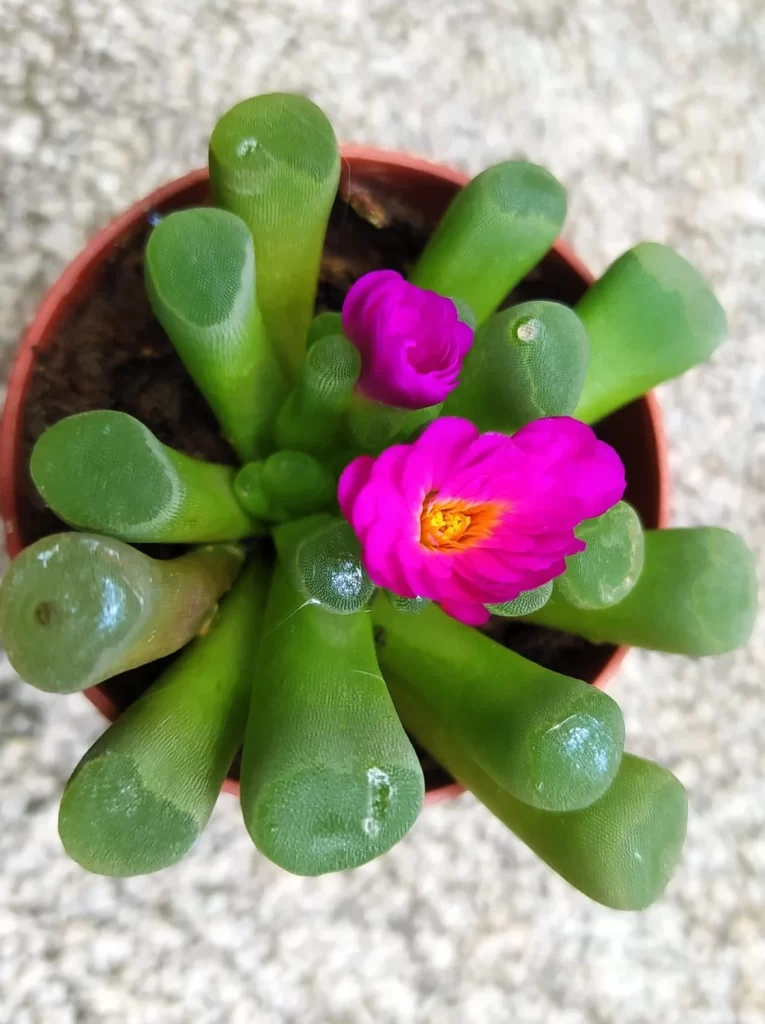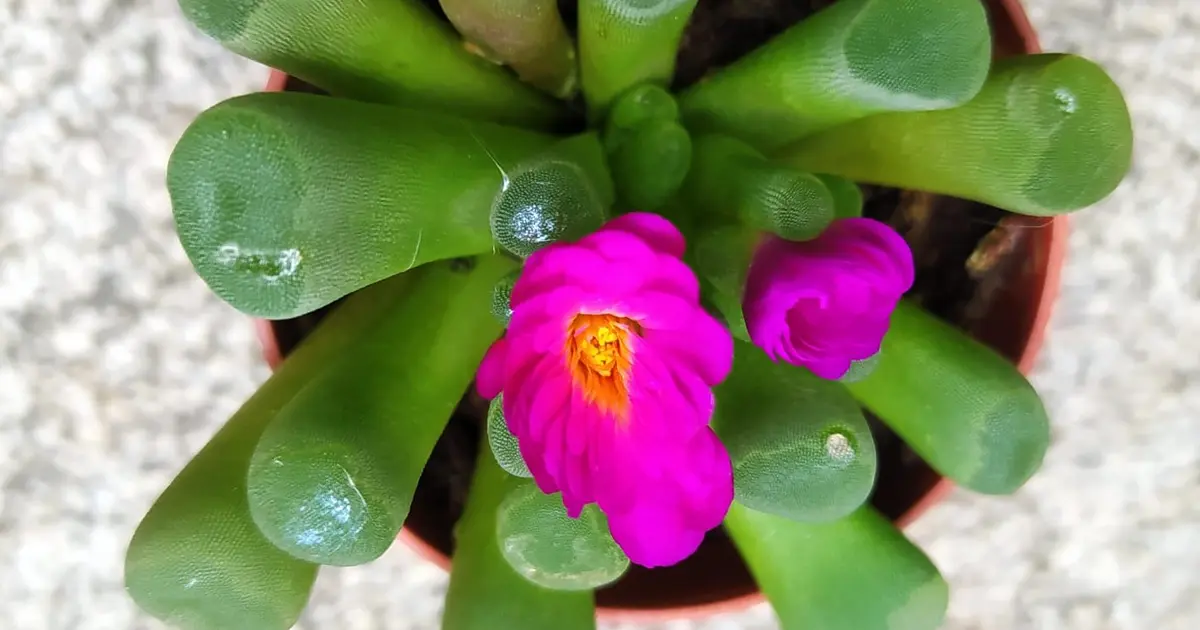The Baby Toes plant, scientifically known as Frithia pulchra, is a fascinating succulent that brings a unique charm to any indoor or outdoor space. With its plump, toe-like leaves and delightful blooms, this plant can be a standout in your collection. To ensure your Baby Toes plant thrives and produces stunning flowers, we will explore essential tips and techniques to promote optimal growth and blooming.
Understanding the Baby Toes Plant
Before diving into care tips, it’s essential to know more about this remarkable plant. Native to South Africa, Baby Toes is a member of the Aizoaceae family. It features thick, fleshy leaves that resemble little toes, hence the name. During the blooming season, typically in late summer, it produces vibrant yellow or white flowers that add to its appeal.
Ideal Growing Conditions for Baby Toes
Light Requirements
To thrive, Baby Toes requires plenty of bright, indirect sunlight. Ideally, place the plant in a spot where it can receive at least 4 to 6 hours of sunlight daily. Direct sunlight can burn the leaves, making filtered light the preferred choice.
Soil Conditions
Choosing the right soil is crucial for the health of your Baby Toes plant. Here are the ideal conditions:
- Well-Draining Soil: A cactus or succulent mix is perfect, as it allows excess moisture to escape and prevents root rot.
- pH Level: Aim for a slightly acidic to neutral pH, ideally between 6.0 and 7.0.
Watering Techniques for Thriving Blooms
Proper watering is vital to the health and blooming of your Baby Toes plant. Here’s how to ensure you’re watering correctly:
Watering Frequency
- Infrequent Watering: Baby Toes are drought-tolerant and prefer to dry out between waterings. Water every two to three weeks during the growing season (spring and summer) and reduce frequency in fall and winter.
- Check Soil Moisture: Before watering, check the soil’s moisture level by sticking your finger about an inch into the soil. If it feels dry, it’s time to water.
Watering Method
- Deep Watering: Water the plant thoroughly until water drains from the bottom of the pot. Ensure the pot has drainage holes to prevent water accumulation.
- Avoid Overwatering: It’s crucial to avoid letting the plant sit in water, as this can lead to root rot.

Fertilization for Optimal Growth
Fertilizing your Baby Toes plant can encourage healthy growth and blooming. Follow these guidelines for effective fertilization:
Choosing the Right Fertilizer
- Balanced Fertilizer: Use a diluted, balanced fertilizer, such as a 10-10-10 or a specific cactus fertilizer.
- Organic Options: Consider organic options like compost tea or fish emulsion for a natural nutrient boost.
Fertilization Schedule
- Spring Feeding: Begin fertilizing in early spring as the plant enters its growing season.
- Mid-Season Boost: Apply fertilizer again in mid-summer to support blooming. Refrain from fertilizing in the fall and winter when the plant is in its dormant phase.
Promoting Blooming in Baby Toes
To encourage your Baby Toes plant to produce its lovely flowers, consider the following tips:
Temperature and Humidity
- Optimal Temperature: Baby Toes thrive in temperatures between 70°F and 80°F (21°C – 27°C) during the day and can tolerate cooler temperatures at night.
- Humidity Levels: This plant prefers low humidity, making it suitable for most indoor environments.
Stress for Blooms
Interestingly, Baby Toes may need a little stress to trigger blooming. Allowing the plant to become slightly root-bound or experiencing mild drought can encourage flowering.
Pruning and Maintenance
Regular pruning and maintenance are essential for the overall health of your Baby Toes plant:
Removing Dead Leaves
- Routine Inspection: Check your plant regularly for any dead or yellowing leaves and remove them to promote better airflow and overall health.
- Sanitize Tools: Always use clean, sharp tools when pruning to prevent disease spread.
Re-potting
- When to Re-pot: Re-pot your Baby Toes every 2 to 3 years or when it becomes root-bound.
- Choosing a New Pot: Select a pot that is slightly larger and has drainage holes. Use fresh, well-draining soil to give your plant a nutrient boost.
Pest and Disease Management
While Baby Toes are relatively pest-resistant, they can occasionally face issues. Here’s how to manage common pests and diseases:
Common Pests
- Mealybugs and Aphids: These pests can sap the plant’s energy. Use insecticidal soap or neem oil to treat infestations effectively.
- Fungus Gnats: If you notice small flying insects around the plant, let the soil dry out completely to eliminate their breeding ground.
Disease Prevention
- Avoid Overwatering: Ensure proper watering techniques to prevent root rot and fungal diseases.
- Good Air Circulation: Ensure your Baby Toes plant is not overcrowded to promote good airflow, reducing the risk of disease.
Companion Planting for Baby Toes
Consider companion planting to create a diverse and beautiful garden. Suitable companions for Baby Toes include:
Succulents and Cacti
- Echeveria: This succulent pairs well with Baby Toes, sharing similar care requirements.
- Haworthia: Another succulent that thrives in similar conditions, making it an excellent companion.
Herbs
- Thyme and Oregano: These herbs not only add greenery but can also deter pests, benefiting your Baby Toes plant.
Seasonal Care Tips
Summer Care
- Monitor Watering: Increase watering frequency as temperatures rise, ensuring the plant does not dry out completely.
- Fertilize: Continue with fertilization to promote blooming and growth.
Winter Preparation
- Reduce Watering: Decrease watering frequency as the plant enters dormancy in winter.
- Temperature Management: Keep the plant in a warm location, avoiding exposure to frost.
Enjoying Your Blooming Baby Toes Plant
By following these detailed tips and techniques, you can ensure your Baby Toes plant (Frithia pulchra) flourishes and produces beautiful blooms. With the right care, your Baby Toes will become a stunning centerpiece in your home or garden, showcasing its unique charm and vibrant flowers.

